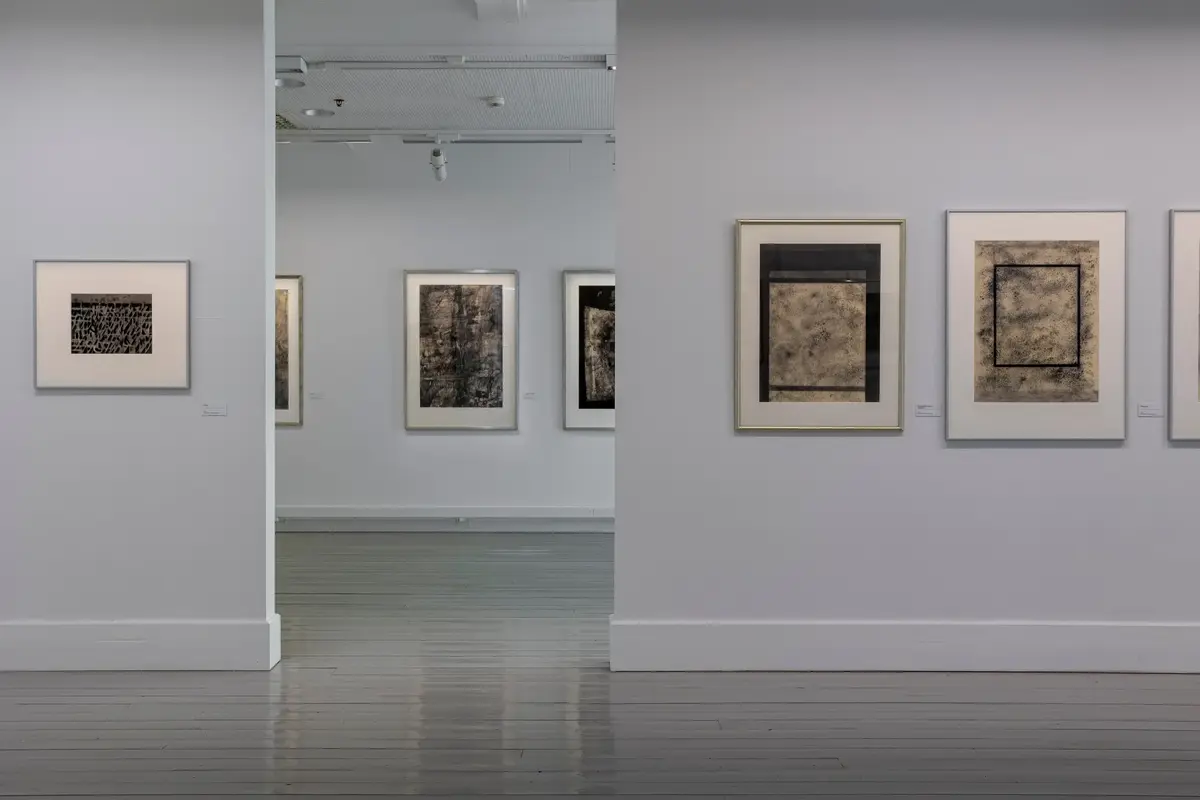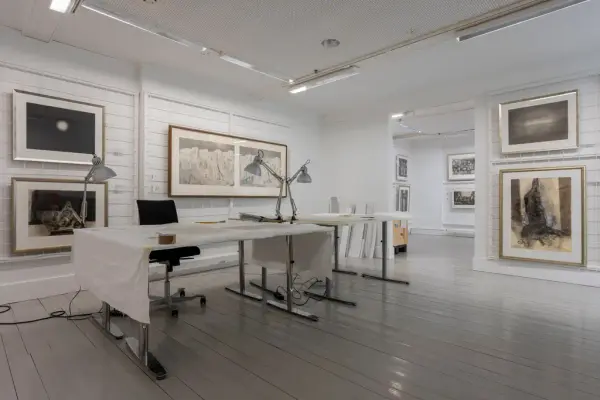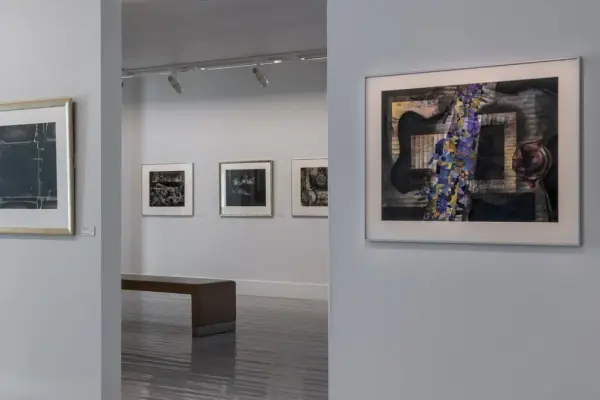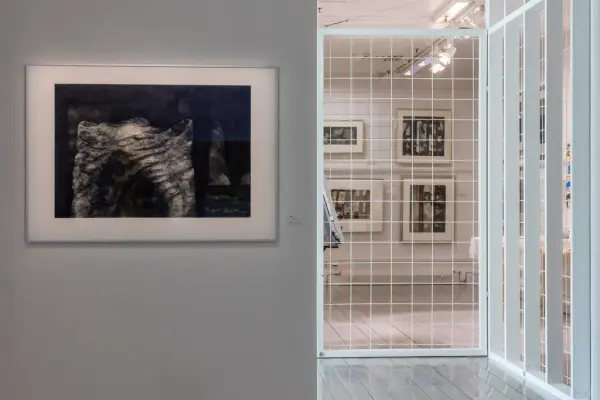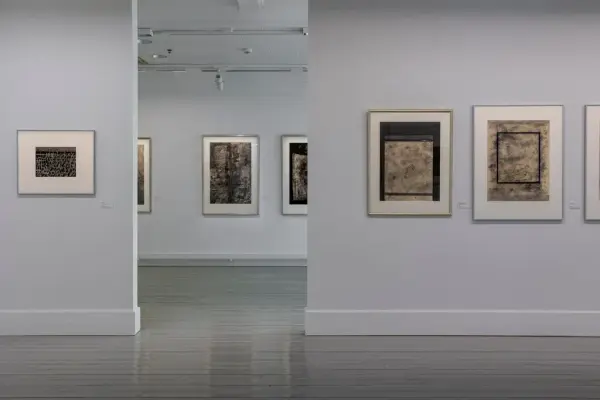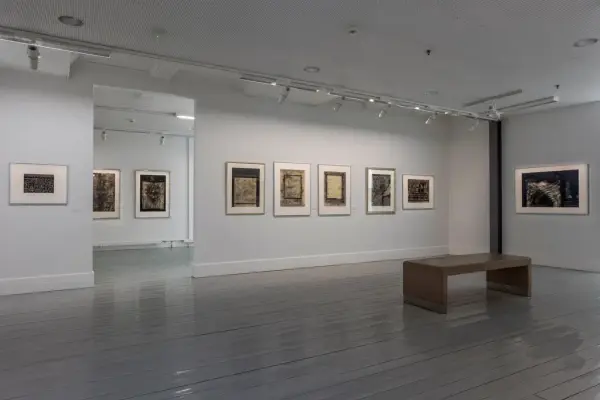Bleken is probably best known by the general public for his colourful paintings and prints, but it is his charcoal drawings that have received the most acclaim from art critics and historians. The charcoal drawings are sombre, hard and precise, but at the same time, the charcoal takes on a guise of softness and life. Against the Bleken is probably best known by the general public for his colourful paintings and prints, but it is his charcoal drawings that have received the most acclaim from art critics and historians. The charcoal drawings are sombre, hard and precise, but at the same time, the charcoal takes on a guise of softness and life. Against the light-coloured paper, the black element conjures up a whole world of textures and shades.
Unlike Bleken’s more expressive paintings and prints, his charcoal drawings have not gained a lot of traction on the art market, thus they have existed in a realm removed from intense public pressure. This has allowed Bleken to freely explore the possibilities that charcoal has to offer without worrying about the expectations of the market. The charcoal drawings may have felt liberating for Bleken at a time when the approach to painting seemed daunting, especially in the 1960s, when artists broke free from French-influenced abstraction and forged a new path for non-figurative painting. The break with the aesthetics of the 1950s was not singular, and included some painters of the older generation. By the late 1960s, Håkon Bleken reworked these rigid ideas of image composition further and developed a more figurative and literary style of painting. He interpreted the overarching moral dilemmas and existential questions of the day with a rhetoric that was filled with pathos, yet also critical.
Håkon Bleken has attracted a lot of attention as a contemporary artist, especially with his first presentation of his collected charcoal works, Fragmenter fra et diktatur (“Fragments from a Dictatorship”), which is regarded as the artist’s definite breakthrough. The exhibition, which was shown at Trondhjems Kunstforening in 1970 and at Kunstnernes Hus in 1971, mainly consisted of works from the year of the exhibition, 1970, but also included some older works, such as Kraner (1962).
Art historian Jan Brochmann described the exhibition as a shock and proof that an art medium and political engagement could be united.
Art historian Trygve Nergaard suggested that Bleken’s earlier charcoal drawings are heavily influenced by artist and colleague Lars Tiller’s methods for working with charcoal; following the defining compositional rules of the golden section and using stencils in order to create spatial illusions. In his early charcoal drawings, Bleken chose to focus on the shapes of cubism and a strict non-figurative exploration of form.
“Order on the paper; one thing at the time. One shape in front of another, one stencil behind another. Depth and volume through the use of simple, abstract shapes. The stencils, these simple silhouettes from which powerful effects can be garnered, become central elements in Bleken’s artistic method during this period. They remain equally important today.” - Tone Hansen
Showcased in this exhibition are a selection of the charcoal drawings from Trondheim kunstmuseum’s collections from the period 1961-1998. In total, 29 drawings are hung in the two outer exhibition spaces, covering a wide range of motifs. Here, there are a number of works from the series Fragmenter fra et diktatur, with motifs ranging from portraits, still lives and landscapes, to completely abstract motifs, such as the series Våkenatt (1975). Also on display here are early compositions, including cubist-inspired motifs and psychological ones, such as Fra Hedda Gabler (1995) and the pathos-filled Slakterhuset (1998).
In the workshop that has been set up across the two inner spaces on the upper level of Gråmølna, an additional 14 works are on display. More works will be brought out from storage, and the works displayed in the exhibition spaces will change continuously as the inventory of the collection progresses.
- 1/5
Photo: Lili Zaneta/TKM. - 2/5
Photo: Lili Zaneta/TKM. - 3/5
Photo: Lili Zaneta/TKM. - 4/5
Photo: Lili Zaneta/TKM. - 5/5
Photo: Lili Zaneta/TKM.
Opening hours at TKM Gråmølna:
Thursday - Sunday: 12 - 16 Monday - Wednesday: closed
